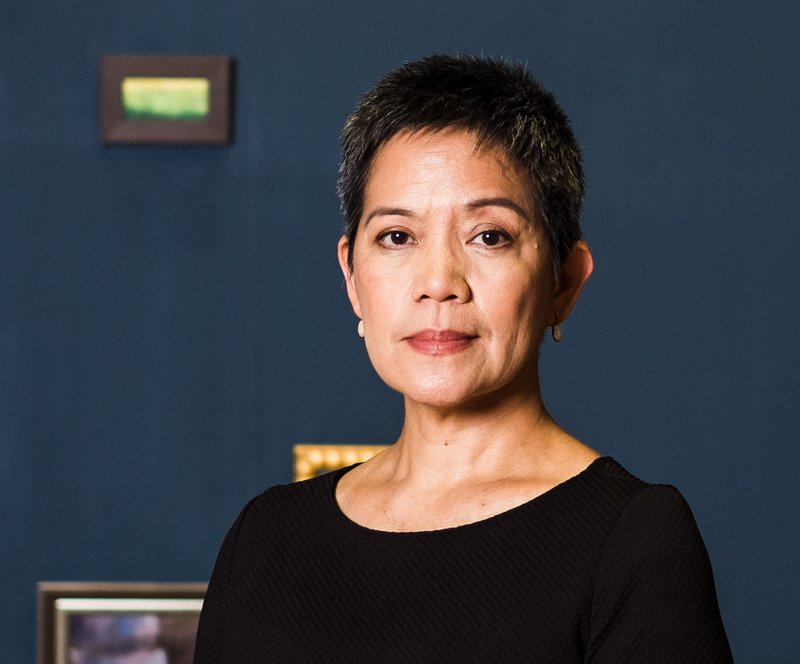Maria Victoria Herrera

Conference Sessions and Visits
The content and venue sites of the conference was an ideal way of introducing conference participants, especially first-time visitors to Stockholm, to the cultural community and infrastructure of the city. Apart from the museum venues, visiting the Royal Institute of Art, Stockholm University and Tensta konsthall were most welcome as these are spaces which a regular visitor/tourist would not be able to easily access. Conference logistics were well-planned and managed and I am thankful to the CIMAM secretariat and conference organizers for managing the sessions and movement of participants seamlessly.
Working around the theme of The Museum in Transition, the keynote speakers and presenters touched on their respective contexts which were both diverse and familiar in some ways to the context of my organization, the Ateneo Art Gallery – a university art museum of Philippine modern and contemporary art that has a long history of almost 6 decades. Based on the presentations and discussions, Transition does not only refer to looking or moving forward but also taking stock of and representing an institution’s history for contemporary audiences.
Moderna Museet’s current programs of building on the strength of cornerstone work in its collection is much appreciated but more so by how its programs are also informed by its history and archival collection. This has been a direction we have just started to pursue as a way of contributing to the history of Philippine contemporary art. The same is true with how programs of the Modern Art Museum of Buenos Aires build on its legacy. Ms. Noorthoorn also reminded us of the importance of acknowledging the varied publics – the community of artists with varied voices and concerns, actual visitors, and potential visitors. Sessions on art and technology raised questions on how can museums evoke new sensibilities.
Day 3 sessions were quite interesting as it opened the curatorial profession and mainstream exhibition practices to criticism. I especially appreciated Mami Kataoka’s comment on how curator’s in the Asian region do not seem to figure into high-profile scandals. Is this a reflection of the status of the profession in our respective countries?
Lastly, it was great to meet grantees from the different regions and with varied ranges of curatorial practice (institution-based, freelance, academics etc.…). The 4 days together allowed us to discover shared experiences and contexts especially with those from Asia and South America.
I was happy to have decided to extend my visit before and after the conference as it allowed me to visit other museums and exhibition spaces in Amsterdam and to return to some of the conference venues to better appreciate the exhibitions. I visited the photography exhibitions at the Kulturhuset after the conference and was very moved by the well-curated exhibit on the Holocaust survivors.
2 -Expanding and Strengthening Networks Receiving the grant to attend the CIMAM Annual Conference in Stockholm opened opportunities to meet and reconnect with colleagues from different regions. Apart from meeting colleagues from Singapore who have been our regular collaborators, I re-connected with Judith Greer of the Sharjah Art Foundation whom I met last year in Singapore. She generously opened the possibility of collaborating with Ateneo Art Gallery especially after the Foundation’s president, Sheikha Hoor Al Qasimi, had made a visit to our museum early this year together with curators of the 2019 Sharjah Biennale. Judith Greer and I discussed feasible projects we can work on, among them an exhibition of video-based works from our respective collections.
I was looking forward to the visit to Iaspis after the conference proper as I wanted to explore the possibility of engaging them to partner with us for our annual contemporary art award program. The Ateneo Art Awards (since 2004) include opportunities for its three winners annually to be invited to a residency in Singapore, Australia, and the UK. It would be great to explore a possible residency partnership with Iaspis in the future. I hope my recent email to Jan and Lena will get a positive feedback.
Lastly, it was great to meet grantees from the different regions and with varied ranges of curatorial practice (institution-based, freelance, academics etc.…). The 4 days together allowed us to discover shared experiences and contexts especially with those from Asia and South America.
I was happy to have decided to extend my visit before and after the conference as it allowed me to visit other museums and exhibition spaces in Amsterdam and to return to some of the conference venues to better appreciate the exhibitions. I visited the photography exhibitions at the Kulturhuset after the conference and was very moved by the well-curated exhibit on the Holocaust survivors.